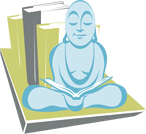 You hold degrees in law and engineering and it is clear from the subject matter of A Walk Across The Sun that you have a deep understanding of the horrors of sex trafficking and are a passionate advocate for human rights. Did the idea for the novel grow out of your work in this area or did your writing lead you to investigate it more deeply?
You hold degrees in law and engineering and it is clear from the subject matter of A Walk Across The Sun that you have a deep understanding of the horrors of sex trafficking and are a passionate advocate for human rights. Did the idea for the novel grow out of your work in this area or did your writing lead you to investigate it more deeply?
The idea for the novel was my wife's, actually, but it grew out of our shared passion for international justice issues. In 2008, we happened across a film on the sex trade that had a deep impact on us and, in addition, we had a fairly visceral personal experience that forced us to confront the reality of modern slavery in a new way. These events prepared us for the journey. I've been experimenting with fiction for years, searching for a story with wings. When my wife gave me the idea for the book, I knew it was right. It brought together my three passions in life--storytelling, human rights, and the world and its cultures. I ran with it and never looked back.
The novel presents a fascinating and nuanced view into Indian culture. How would you describe your relationship with India--its people and its culture? On a related note, how did you conduct your research for the novel?
India is an endlessly fascinating place, and Mumbai has to be one the most existentially thrilling cities in the world. That said, before I started work on A Walk Across the Sun I knew very little about the subcontinent, except through the lens of organizations working to combat the forced prostitution of children. I knew that to write a book set largely in India I had to immerse myself in its culture, its traditions, its consciousness. I needed to read its literature--historical and modern. I needed to learn its stories. And, most importantly, I needed to spend time on its soil. So I read everything I could get my hands on (an Indian friend recommended much of my reading list), and I spent over a month in Mumbai and Chennai in early 2009, experiencing the land and its people and at the same time exploring the underworld of human trafficking.
There seems to be an increasing awareness of sex trafficking, especially cases involving underage girls. Yet, as your novel so clearly illustrates, the challenges of combating this labyrinthine network are almost insurmountable.
The trade in human beings thrives because it is extraordinarily profitable. Without a supply of vulnerable women and girls, it would wither. Without a demand for cheap commercial sex, it would cease. To combat the trade effectively, we have to educate poor and vulnerable women about the perils of trafficking and empower them to take control of their lives. We have to make it morally unthinkable (and legally dangerous) for men to pay for sex with underage girls. And we have to drive the cost of doing business for traffickers and pimps past the breaking point by putting large numbers of them in jail for a long time.
Who were your inspirations for Ahalya and Sita Ghai, the sisters at the heart of A Walk Across The Sun?
Ahalya and Sita are a composite of girls I met during my time in India and girls I imagined using the rich palate of materials I compiled during my research. When I was in Mumbai, I met a number of adolescent girls who had been rescued from brothels in the city, and I learned their stories from their rescuers and caretakers. I also interviewed a girl who had been swept away by the waves of the Boxing Day tsunami and had lived to tell about it. Without these conversations, I would never have been able to create the detailed interior and exterior worlds inhabited by Ahalya and Sita. Yet no real life story I came across was uniquely defining. The characters of the Ghai sisters came together with a lot of hard work and imagination.
The novel delves not only into the intricacies of the international sex trade, but also provides a deep view into family relationships and the clash and merge of several different cultures, all while maintaining the pace and tension of a thriller. What were the challenges of harnessing so many disparate elements and how did you meet those challenges?
When I set out to write A Walk Across the Sun, I sought quite intentionally to combine thriller and literary elements into a fast-paced, yet multilayered, human drama. I wanted the pages to turn themselves, yet I wanted to give my readers more substance than they typically get in a suspense novel. I wanted to take them to India, to show them the horrors of a Mumbai brothel (without turning them away with graphic detail), to feel the pain of a crumbling multicultural marriage and, ultimately, to leave them with the sense that all is not lost, that as long as the heart beats there is hope. I wish I could describe my process. The best I can say is that I love multi-dimensional puzzles, I love getting into the hearts of characters, and I love sitting down to write. There were times when working on the book was a labor of will. But far more often it was a labor of delight. In addition, I had some extraordinary editors and advisors. I couldn't have done it without them.
What are you working on now?
I just started writing my next novel, which will follow the mold of A Walk Across the Sun but will address different issues in a very different cultural context--Southern Africa. I spent six weeks in Zambia and South Africa between the end of summer and early fall, conducting research. I expect to deliver a draft of the book to my editors by the spring. I don't expect that I will revisit the characters in A Walk Across the Sun in a future novel. I believe their story has been told. However, in writing the book, I stumbled upon a literary style that works quite well for me, and I hope to revisit it in many future stories. --Debra Ginsberg

